At the end of June, Master Gardener and American Hydrangea Society Board Member, Dörte Schmieta, treated me to a wonderful morning in her spectacular garden. The birds were singing, hummingbirds were darting about, and the pollinators were busy.
Dörte is a big fan of Soil³ compost and has used 9 BigYellowBags (that's 9 cubic yards) in her garden just this year! As we toured the lush landscape, she was eager to describe a variety of techniques for incorporating this wonderful humus compost to amend her soil and feed her beautiful perennials and countless hydrangeas.
Watch this video of Dörte showing me her garden.
Grow Wherever You are Transplanted
Dörte moved to the United States from Germany 23 years ago. She and her family have lived in their Georgia home and developed this amazing landscape for 19 years. When she began to garden here, she quickly learned that Georgia clay was very different from the rich soil she had known in Germany. She lost many plants along the way as she learned about the importance of cultivating good soil to feed her plants.
A Beautiful Nature Habitat
 Today, Dörte’s garden is a feast for the eyes and there are beautiful surprises everywhere you look. Her property has been certified by the National Wildlife Federation as a Certified Wildlife Habitat® and a Bird-Friendly Habitat and also approved by the Environmental Education Alliance of Georgia as a Certified Pollinator Habitat and a Monarch Waystation.
Today, Dörte’s garden is a feast for the eyes and there are beautiful surprises everywhere you look. Her property has been certified by the National Wildlife Federation as a Certified Wildlife Habitat® and a Bird-Friendly Habitat and also approved by the Environmental Education Alliance of Georgia as a Certified Pollinator Habitat and a Monarch Waystation.
Gardens Constantly Grow and Change
As the trees grew larger around her property, they created more shade and competed for water. Dörte has divided and transplanted her hydrangeas in new areas to keep them flowering. Her property is covered in hydrangeas that bloom at different times; some of them rebloom throughout the season.
Dörte is an inspired gardener and she frequently mentions her husband, Stefan, who is a great hole-digger, weeder, and helper. As she expanded her garden and created additional planting spaces for more hydrangeas and perennial flowers, the Georgia red clay was challenging. She was constantly looking for ways to break up the clay, incorporate amendments to minimize water run-off, and to help plants absorb adequate natural nutrients.
Several Ways to Use Soil³
While we visited, Dörte described several ways that she uses Soil³ in her garden, including:
The Changing Colors of Hydrangeas
Hydrangeas have beautiful, showy blooms and endless varieties provide a wide range of colors in numerous shades of pink, purple, blue, and even green and white.
Some hydrangea are not influenced by soil pH, but for Hydrangea macrophylla and H. serrata types a soil with low (acidic) pH produces bluer flowers while a high (basic or alkaline) pH produces pinker flowers and a neutral pH produces purple flowers.
Bigleaf hydrangeas with flowers in shades of blue are common in Dörte's area of Georgia where the soil is typically acidic. This beautiful border is filled with Hydrangea macrophylla 'Endless Summer' and Hydrangea serrata 'Bluebird'.
Georgia red clay, pine bark, and pine straw are naturally acidic and lower soil pH. Soil³ compost is neutral and will gradually alter pH and influence the color of hydrangea blooms. Read more about Growing Hydrangeas in Compost, but here's the crux of it:
- In acid soils, amending with Soil³ compost will neutralize the soil. If you have a highly acidic soil and blue hydrangea flowers the pH will be raised and the flower color may be influenced toward pink or purple. Sometimes a soil may be so acidic that the compost simply raises it to a safer acidity, rather than neutralizing the soil.
- In alkaline soil, amending with Soil³ will also neutralize soil toward a lower pH and pink flower colors will be influenced toward the blue or purple. In southeastern clay soils, alkaline conditions are rare, but they can be found on construction sites.

Hydrangea macrophylla 'Blue Enchantress' is a remontant blooming (or reblooming) variety. The first blooms are in spring on old wood and a second round of blooms start in late summer or fall on new wood. 'Blue Enchantress' can be blue or pink depending on the soil pH.
Dörte enjoys growing a wide variety and seeing the different, often changing colors of her bigleaf hydrangeas. The bloom color may change over time as the soil is neutralized or becomes more acidic. She has even seen both blue and pink blooms on the front and back of the very same plant.
Some gardeners use acids (aluminum) or lime to modify the soil pH to change hydrangea bloom color. Amending with Soil³ is gentler and healthier for plants than aggressive pH adjustments using strong additives. Along with Soil³ (which includes beneficial mycorrhizae), Dörte has added gypsum and lime when planting in heavy clay soil. She loves to grow healthy hydrangeas of all kinds and she enjoys seeing the fun colors that appear.
Dörte’s Hydrangea List
With so many beautiful and colorful varieties, it can be hard to choose favorites, but here are some of Dörte’s top picks from her garden:
Hydrangea arborescens ‘Annabelle’
-
Common name is smooth hydrangea or wild hydrangea
-
White mophead flowers; flower color is not affected by soil pH
-
Native to the east coast of the United States
-
Blooms on new wood can be pruned late winter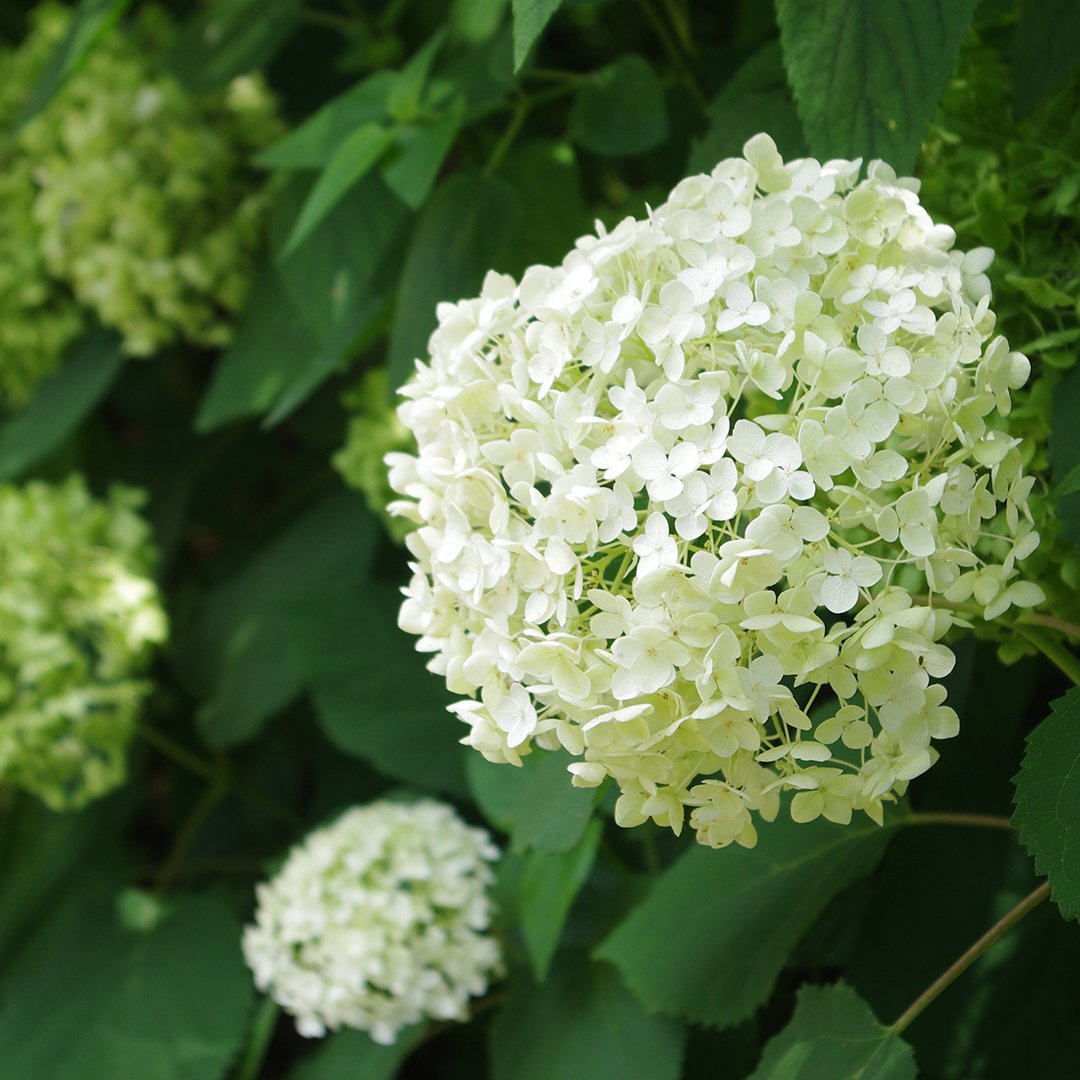 Hydrangea arborescens ‘Annabelle’
Hydrangea arborescens ‘Annabelle’
Hydrangea arborescens from Proven Winners: ‘Incrediball’, ‘Invincibelle Limetta’, ‘Invincibelle Mini Mauvette’, ‘Invincibelle Spirit II’, ‘Lime Rickey’, and ‘Wee White’
-
Common name is smooth hydrangea or wild hydrangea
-
White and pink mopheads, depending on the type; flower color is not affected by soil pH
-
Native to the east coast of the United States
-
Blooms on new wood can be pruned late winter
Hydrangea ‘Irish Lace’
- Common name is garland hydrangea - called this because it blooms up and down the stem, not just on the end like other hydrangeas
- Lacecap flower
- White; aging with green mottling; flower color is not affected by soil pH
- Blooms once, prune after bloom but before August 1 in the South or remove old blooms and dead branches in late winter when plant is sprouting
Hydrangea macrophylla ‘Blaumeise’
- Common name is bigleaf hydrangea
- Lacecap flower
- Medium blue in acid soil; pink in alkaline; purple in neutral
- Blooms once, prune after bloom but before August 1st in the South or remove old blooms and dead branches in late winter when plant is sprouting
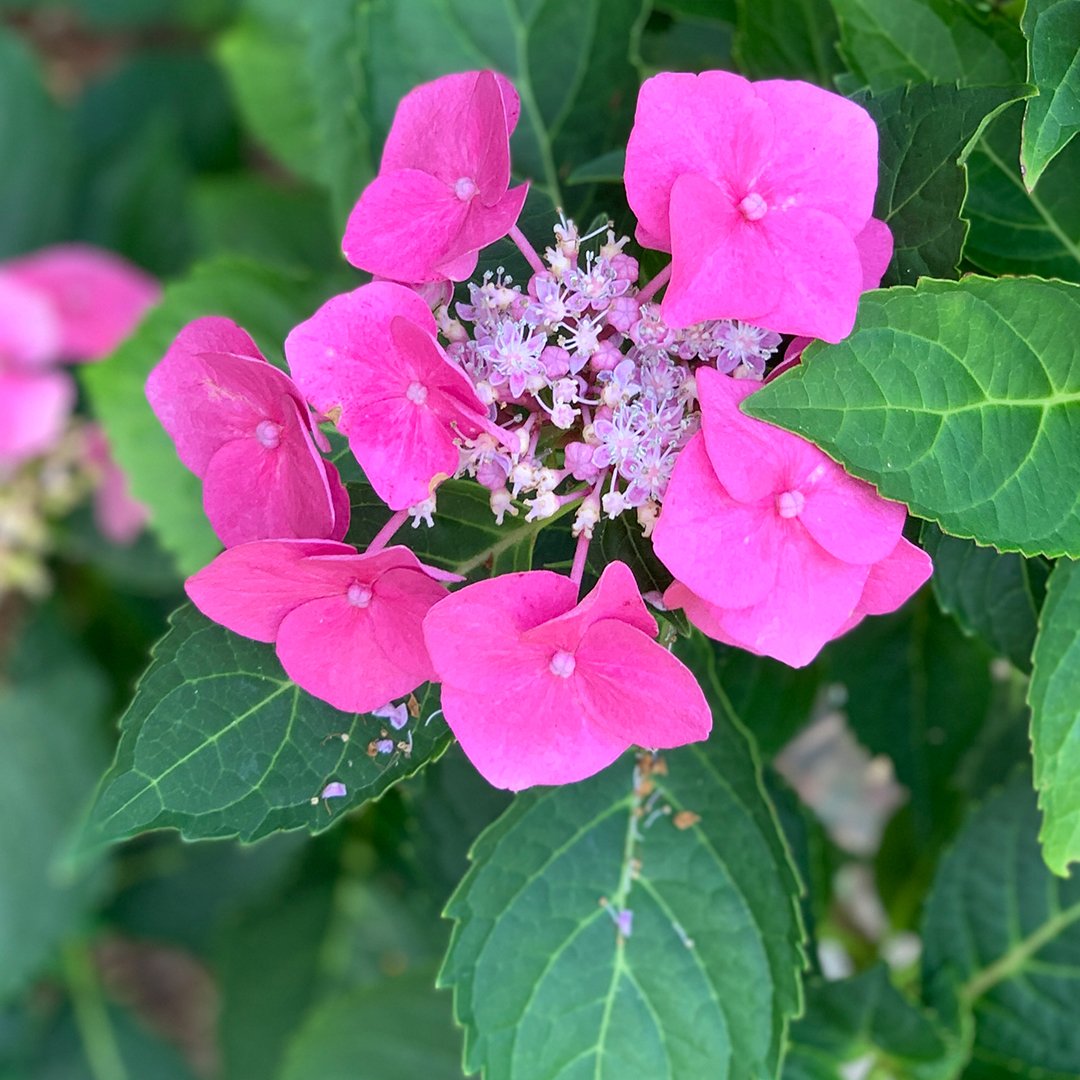
Hydrangea macrophylla ‘Blaumeise’
Hydrangea macrophylla 'BloomStruck’ (Endless Summer series)
- Common name is bigleaf hydrangea
- Mophead flower - slightly smaller mopheads, but prolific
- Rich blue in acid soil; pink in alkaline; easy to turn purple in neutral soil
- Remontant (reflowering) - blooms on old and new wood, not just in the spring; must deadhead to promote reblooming
Hydrangea macrophylla 'Blue Enchantress’
- Common name is bigleaf hydrangea
- Mophead flower - big flower
- Pastel blue in acid soil; pink in alkaline; purple in neutral
- Remontant (reflowering) - blooms on old and new wood, not just in the spring; must deadhead to promote reblooming
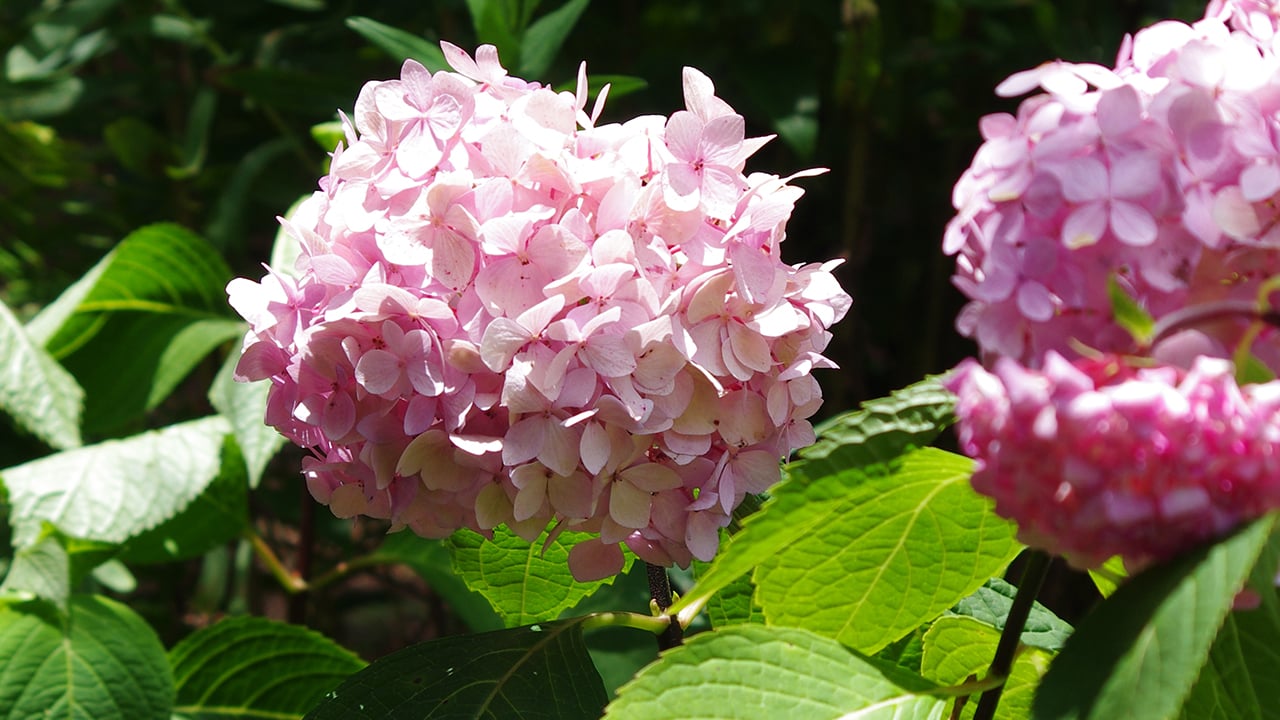 Hydrangea macrophylla ‘Blue Enchantress'
Hydrangea macrophylla ‘Blue Enchantress'
Hydrangea macrophylla ‘Cityline Berlin’
- Common name is bigleaf hydrangea
- Mophead flower
- Rich blue in acid soil; pink in alkaline; purple in neutral
- Blooms once, prune after bloom but before August 1 in the South or remove old blooms and dead branches in late winter when plant is sprouting
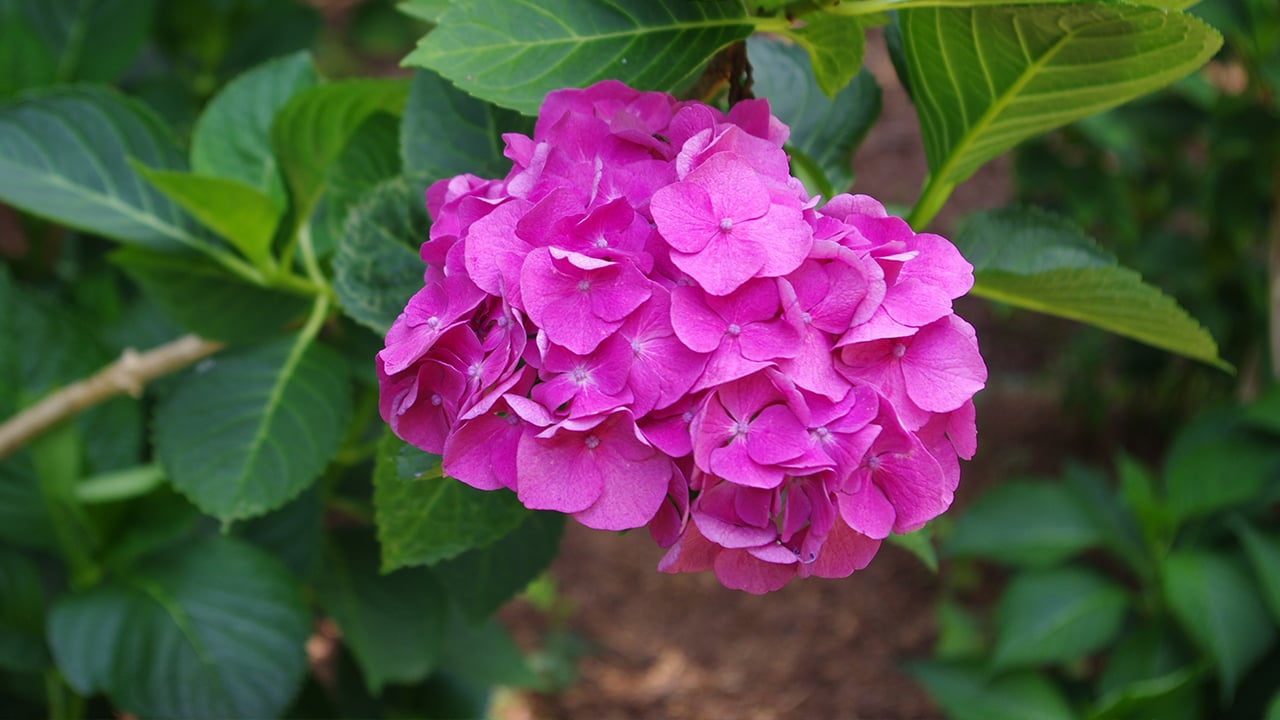 Hydrangea macrophylla ‘Cityline Berlin’
Hydrangea macrophylla ‘Cityline Berlin’
Hydrangea macrophylla: ‘Cupid’, ‘Double Delights Perfection’, Forever and Ever ‘Together’, and ‘Ravel’
- Common name is Bigleaf hydrangea
- Mopheads flower
- Blue in acid soil; pink in alkaline; purple in neutral
- Blooms once, prune after bloom but before August 1 in the South or remove old blooms and dead branches in late winter when plant is sprouting
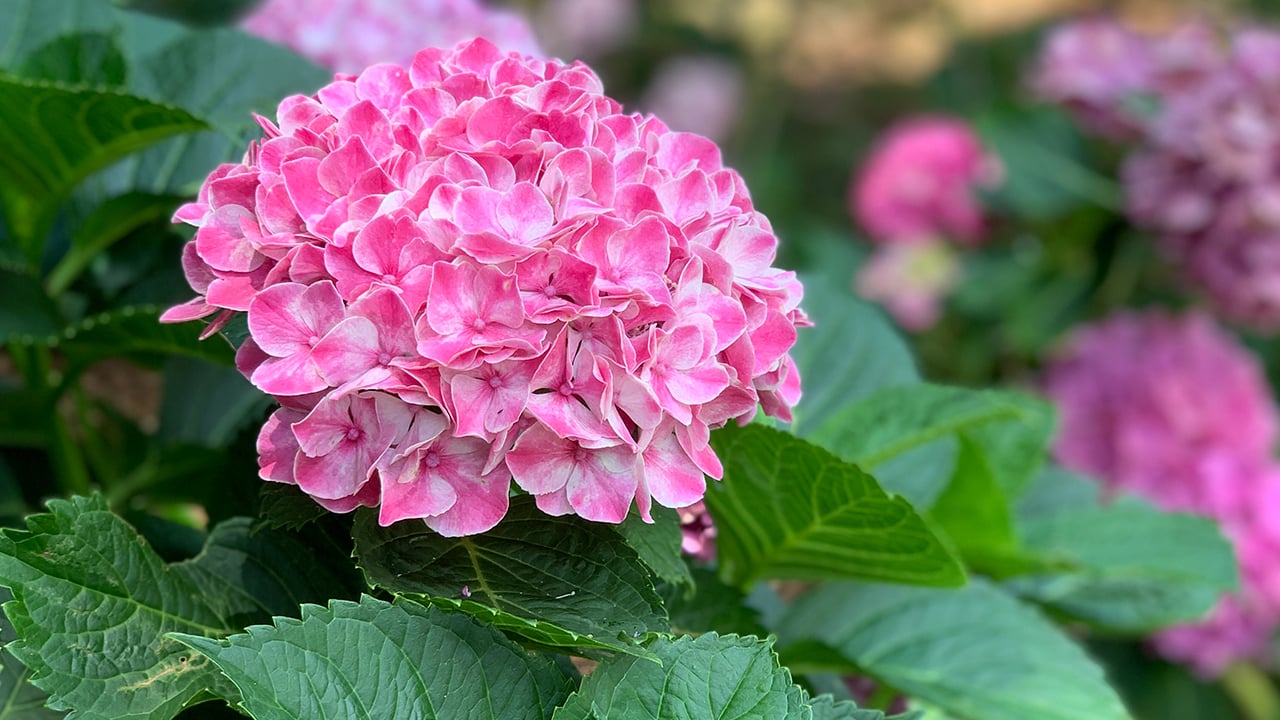 Hydrangea macrophylla ‘Ravel’
Hydrangea macrophylla ‘Ravel’
Hydrangea macrophylla 'Penny Mac’
- Common name is Bigleaf hydrangea
- Mophead flower - big flower
- Pastel blue in acid soil; pink in alkaline; purple in neutral
- Remontant (reflowering) - blooms on old and new wood, not just in the spring; must deadhead to promote reblooming
- From the garden of Penny McHenry, founder of the American Hydrangea Society, and named after her
Hydrangea paniculata ‘Dharuma’, ‘Limelight’, 'Little Quick Fire', 'Tardiva’, and ‘Vanilla Strawberry’
- Common name is panicle hydrangea
- Large, cone-shaped flowers
- Flowers are white; in areas with cooler nights (below 70 degrees) they age pink - variations from bright candy pink to dark rosy pink; flower color is not affected by soil pH
- All bloom on new wood, can be pruned late winter. Very forgiving about pruning - will likely flower whenever you prune it, but flowering might be delayed.
Hydrangea quercifolia ‘Snowflake’ and ‘Ruby Slippers’
- Common name is oakleaf hydrangea
- Large, cone-shaped flowers
- 'Snowflake' and 'Ruby Slippers' both start out white and age dark pink or red in areas where the nights are cool in June (below 70 degrees). 'Ruby Slippers' is especially showy in the pink/red stage, if you're lucky enough to have those cool nights; 'Snowflake' has double the sepals to make the flowers fancier. Flower color is not affected by soil pH
- Blooms on old wood; prune after bloom but before August 1st in the South or remove old blooms and dead branches in late winter when plant is sprouting. Better yet - plant it in an area where it will have all the space it needs and prune it rarely.
- Native to the east coast of the United States
Hydrangea serrata ‘Kurohime’ and ‘Purple Tiers’
- Common name is mountain hydrangea
- Lacecap flowers
- 'Kurohime' and 'Purple Tiers' are both blue in acid soil and pink in alkaline soil and purple in neutral; 'Purple Tiers's has an extra circle of flower petals - that's called a "double" flower and it's a little extra fancy
- Blooms once, prune after bloom but before August 1 in the South or remove old blooms and dead branches in late winter when plant is sprouting
Hydrangea ‘Summer Frost’
- No common name because it's a hybrid between Hydrangea macrophylla and Hydrangea serrata
- Lacecap flower
- Blue in acid soil; pink in alkaline; purple in neutral
- Blooms once, prune after bloom but before August 1 in the South or remove old blooms and dead branches in late winter when plant is sprouting
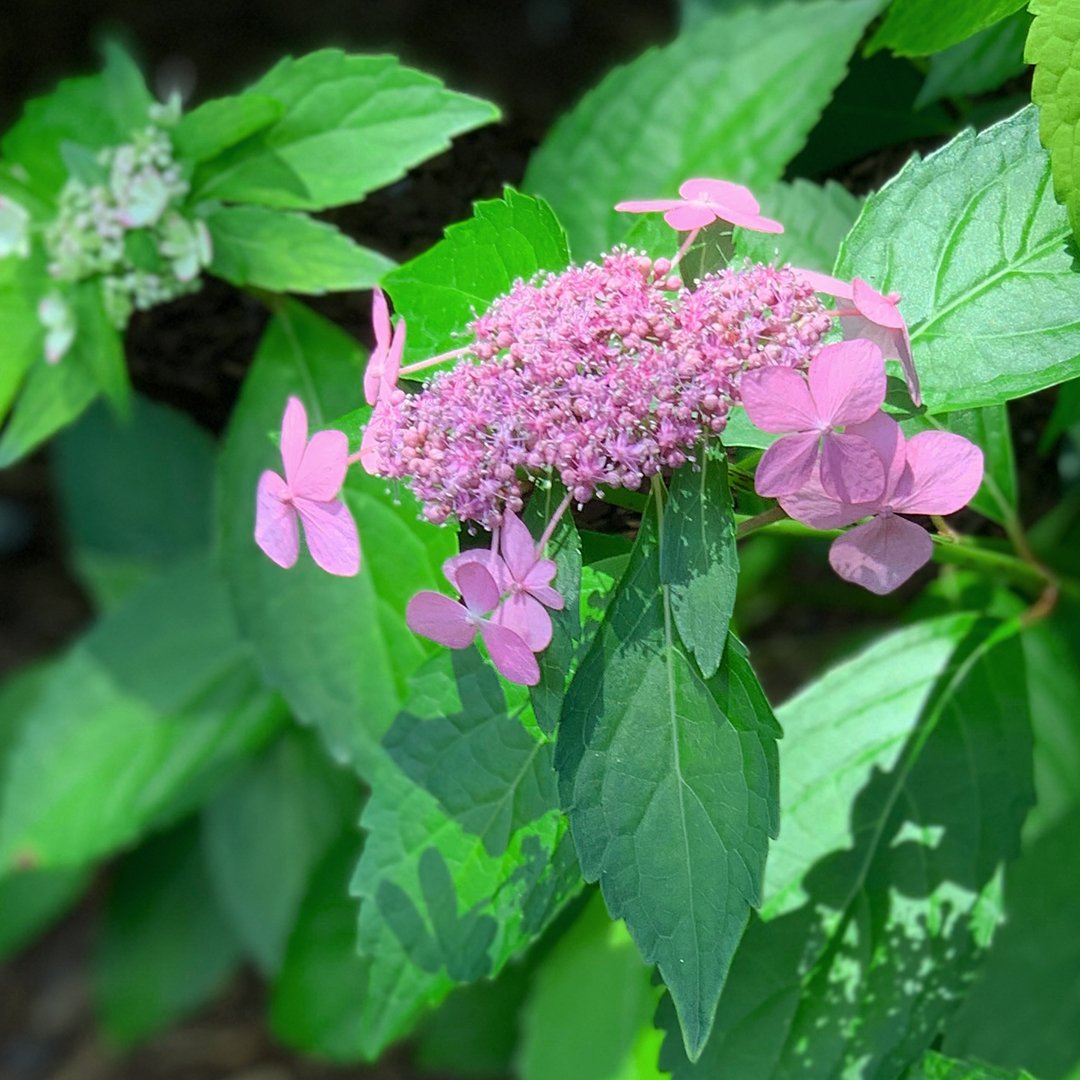 Hydrangea ‘Summer Frost’
Hydrangea ‘Summer Frost’
All photos by Laurie Wakefield.

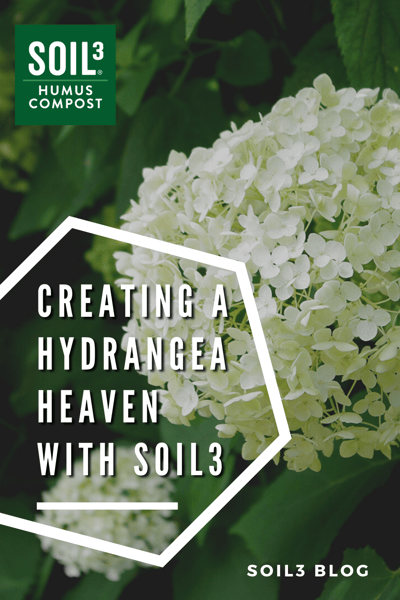




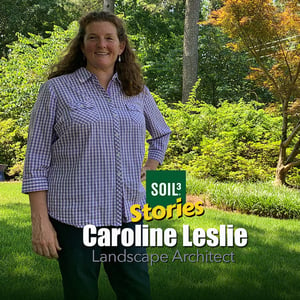

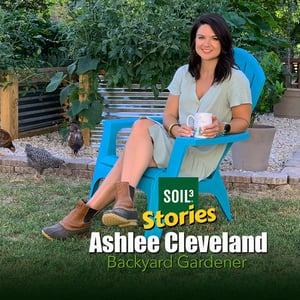


Did this help you out? Have any questions for clarity? Leave a comment below!